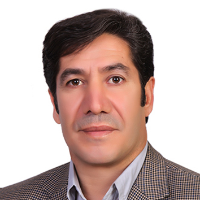Assessment of Soil Erosion and its Relationship with Geomorphic and Vegetation Indices in the Kozeh topraghi Watershed, Ardabil Province
Soil erosion is one of the environmental problems that is a threat to natural resources, agriculture and environment, and in this regard, time and place information of soil erosion plays an effective role in management measures, erosion control and watershed management. Therefore, the aim of this research is to investigate the amount of soil erosion in Kozehh Topraghi watershed with the model (RUSLE) and its relationship with vegetation indicators. To achieve the goal of the research, the RUSLE experimental model, which includes R, K, LS, C and P factors, has been used. For this purpose, using the rain gauge data obtained from the Meteorological Organization, the soil texture layer 1:250000 of Iran, the digital model of 30 meters height of Aster and also the satellite image of Landsat 8 OLI have been prepared in the environment of the geographic information system (GIS) and after overlapping layers, the amount of annual soil erosion at the basin level was estimated. In the next step, the geomorphic and vegetation indices that are effective in the occurrence of soil erosion include topographic moisture index (TWI), waterway power index (SPI), domain curvature index (Curvatore), section curvature index (Profil Curvatore), surface curvature index (Plan) Curvatore) and Normal Vegetation Index (NDVI) were created in ArcMap environment and zoning maps were prepared. In line with this, GIS 10.8, ENVI 5.6, Excel, Word software were used to prepare maps as well as analysis. The results of this study showed that the amount of soil erosion for the whole basin was estimated between 0 and 26.63 tons per hectare per year. In another study, the relationship between geomorphic indices and vegetation cover with annual soil erosion rate was conducted, and the results showed that surface curvature indices and normal vegetation cover are the most influential with correlation coefficients of 0.39 and 0.26, respectively, compared to other indices. Also, Curvatore has the least effect with a value of 0.021. Therefore, it is concluded that based on the results obtained from the analysis of parameters related to erosion in the RUSLE model, as well as the indicators used in relation to soil erosion, finally, the surface curvature index and the vegetation index as an influencing factor compared to other parameters have the highest performance in the estimation of watershed soil erosion. The results of this research confirm the possibility of combining effective geomorphic and vegetation indicators on erosion, as well as the possibility of using other effective indicators and RS and GIS capabilities to quantitatively estimate soil erosion values. A
-
Investigation and analysis of some physiographic characteristics and land cover of Kozetopraghi watershed using geographic information system
*, Nasrin Hasanzadeh Babolan
Journal of Geography and Human Relations, -
Flood risk assessment and zoning using MFFPI model (case study: Shafarood watershed, Gilan province)
, Tayebe Babaee Olam, Amirhesam Pasban
Journal of Geography and Human Relations,



